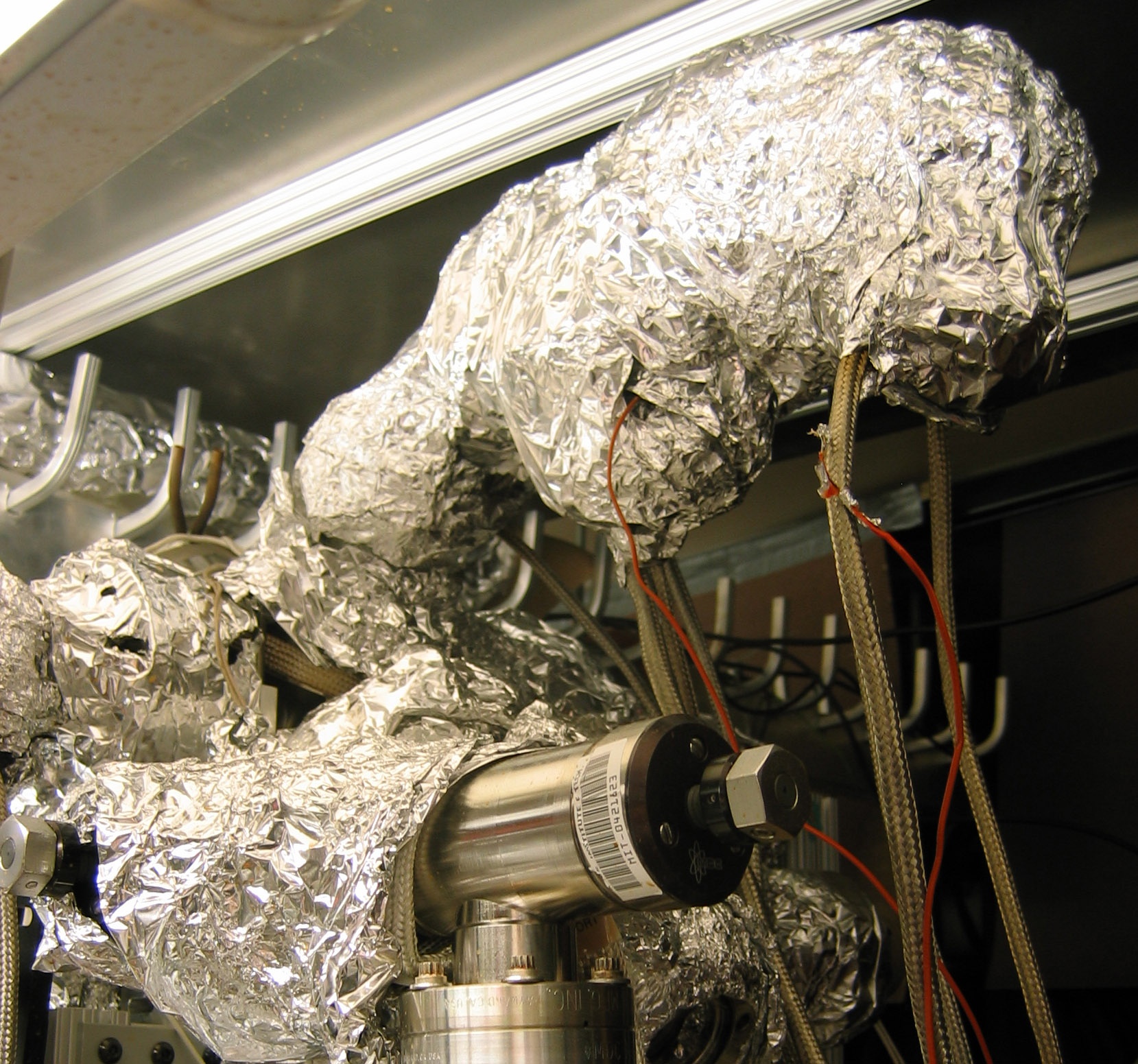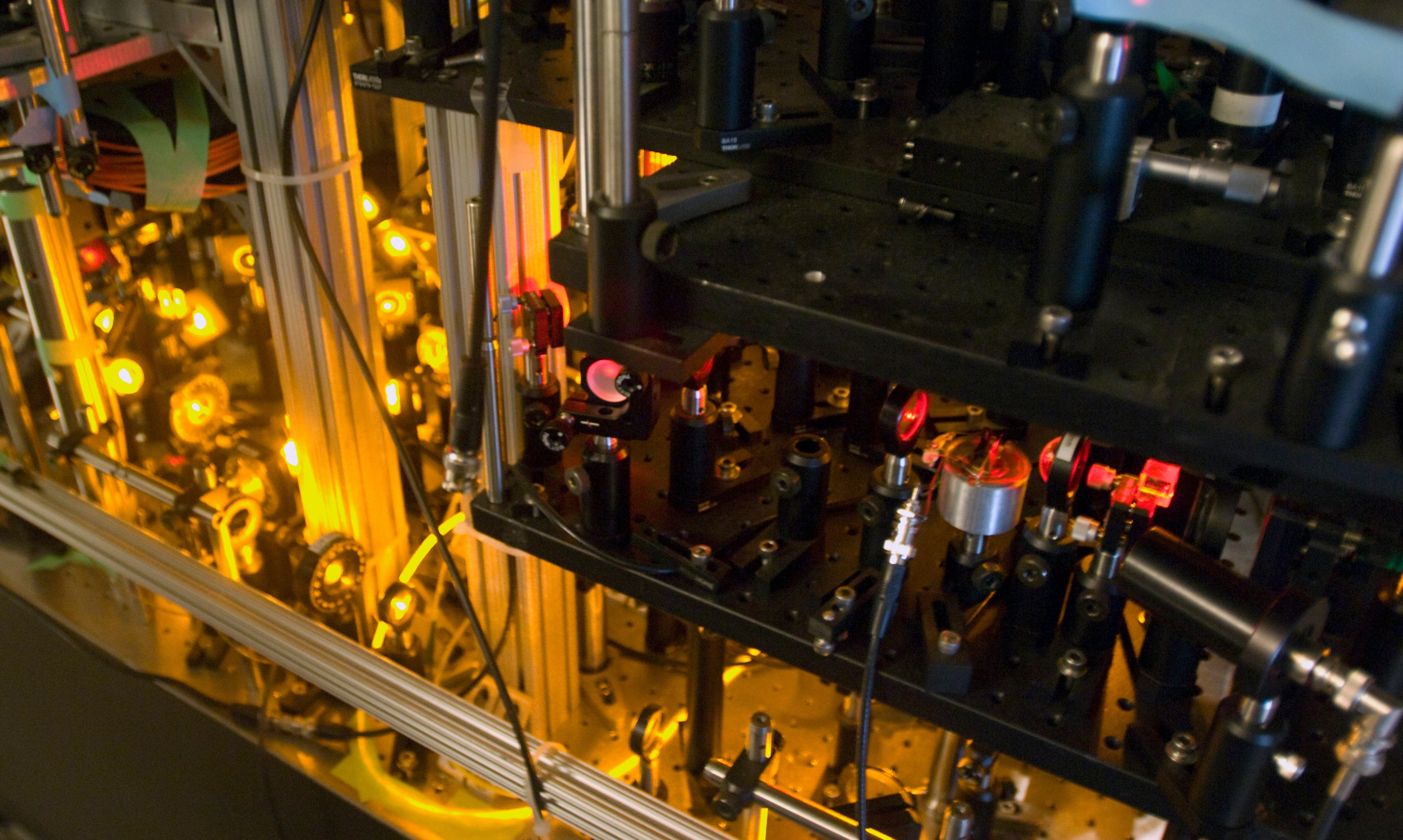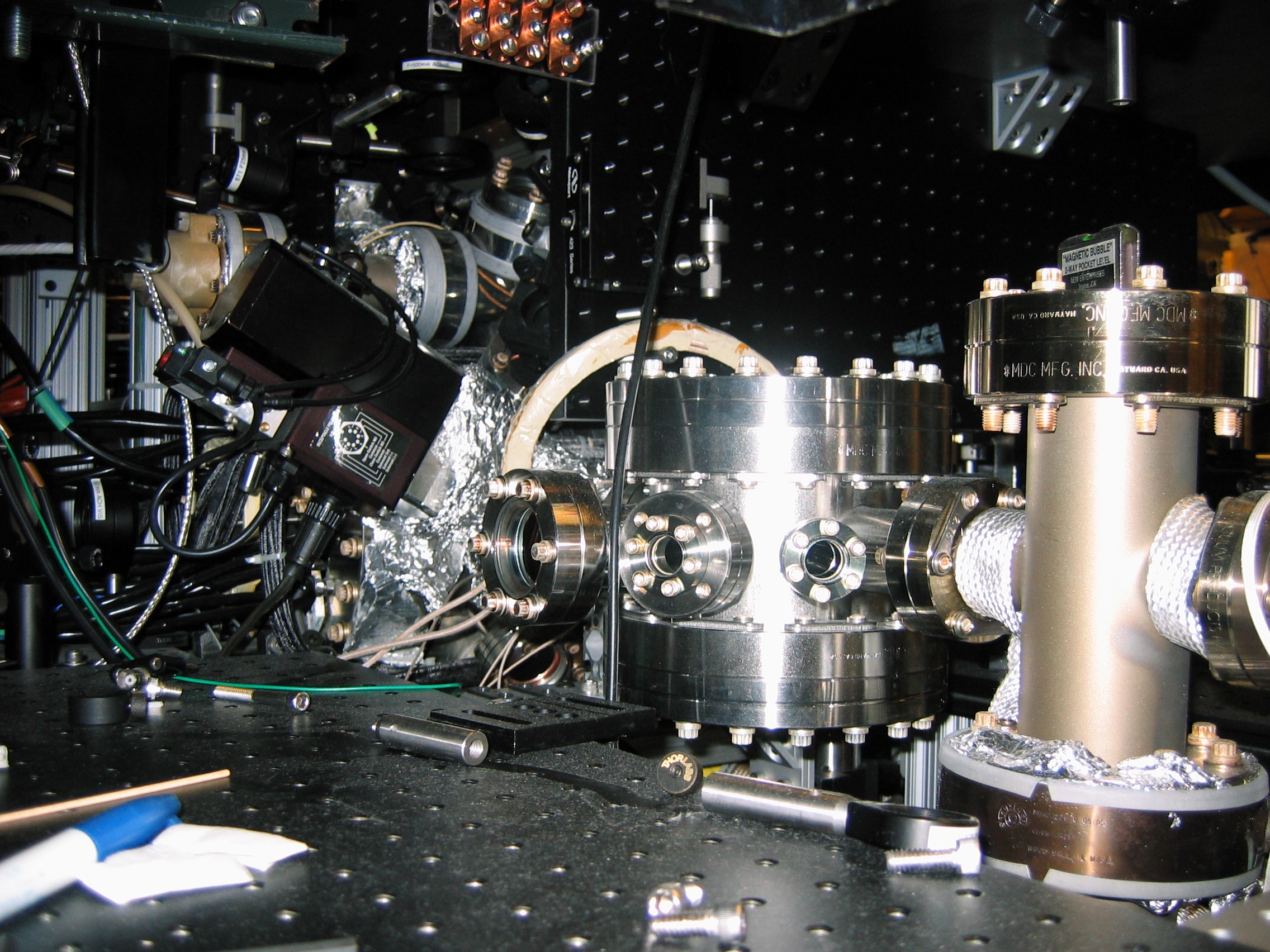You are viewing an old version of this page. View the current version.
Compare with Current
View Page History
« Previous
Version 10
Next »
Description
The BEC3 apparatus is a third-generation experiment, intended to allow for easy manipulation of sodium Bose-Einstein condensates (BEC). These BEC's are moved with optical tweezers from the main production chamber into the auxiliary "science chamber." Once in the science chamber, condensates are loaded into magnetic and optical microtraps for further study. The science chamber provides flexibility in experimental design and the possibility for rapid cycling of experiments without compromising the vacuum in the main production chamber, which is essential for BEC production.
Here is a description of the apparatus (parts of Ananth Chikkatur's Thesis) (pdf, 1.7 MB). In 2007, the experiment was upgraded to have the capability of producing ultracold clouds of both fermionic lithium-6 and bosonic sodium-23. This allows us to study various quantum phase phenomena with fermions or Bose-Fermi mixtures. We are preparing for optical tweezer transport of fermionic lithium atoms into our science chamber, which will allow maximum optical access for various optical lattice experiments.
Our Hardware

|
Main Experiment Table
Our ultracold atoms of sodium and lithium are produced here. They begin as hot gases at >300 degrees Celsius in a dual-species oven. Both types of atoms travel down a Zeeman slower and are captured by overlapping magneto-optical traps (MOT) consisting of yellow and red lasers tuned to sodium and lithium transition frequencies respectively. After being cooled to micro-Kelvin temperatures in the MOT, our atoms are transferred into a magnetic trap and evaporatively cooled to nano-Kelvin temperatures. |
 |
Dual-Species Oven |
 |
Optical Setup for Magneto-Optical Trap (MOT)
The laser beams required to form our MOT are produced on separate laser tables and delivered to the main experiment table by optical fibers. Yellow light for sodium atoms is produced by a dye laser, which is in turn pumped by a 10 W green solid-state laser. Red light for lithium atoms is produced by a set of laser diodes. The lasers are maintained at a fixed reference frequency by locking to the absorption spectra of a vapour cell filled with either sodium or lithium atoms. Additional, predetermined frequency shifts to produce the various laser beams required for cooling, pumping, and imaging are achieved by sending light through acousto-optical or electro-optical modulators.
|
 |
Science Chamber |



